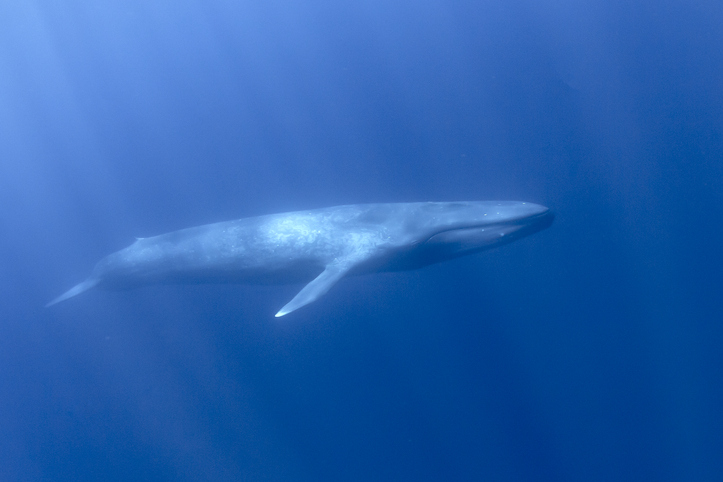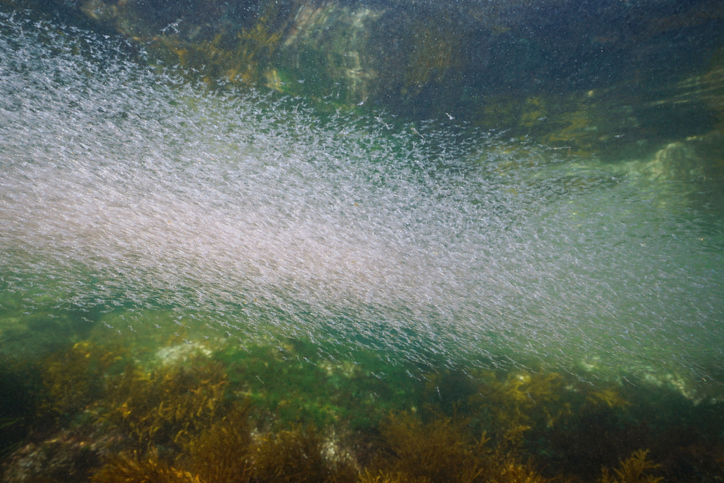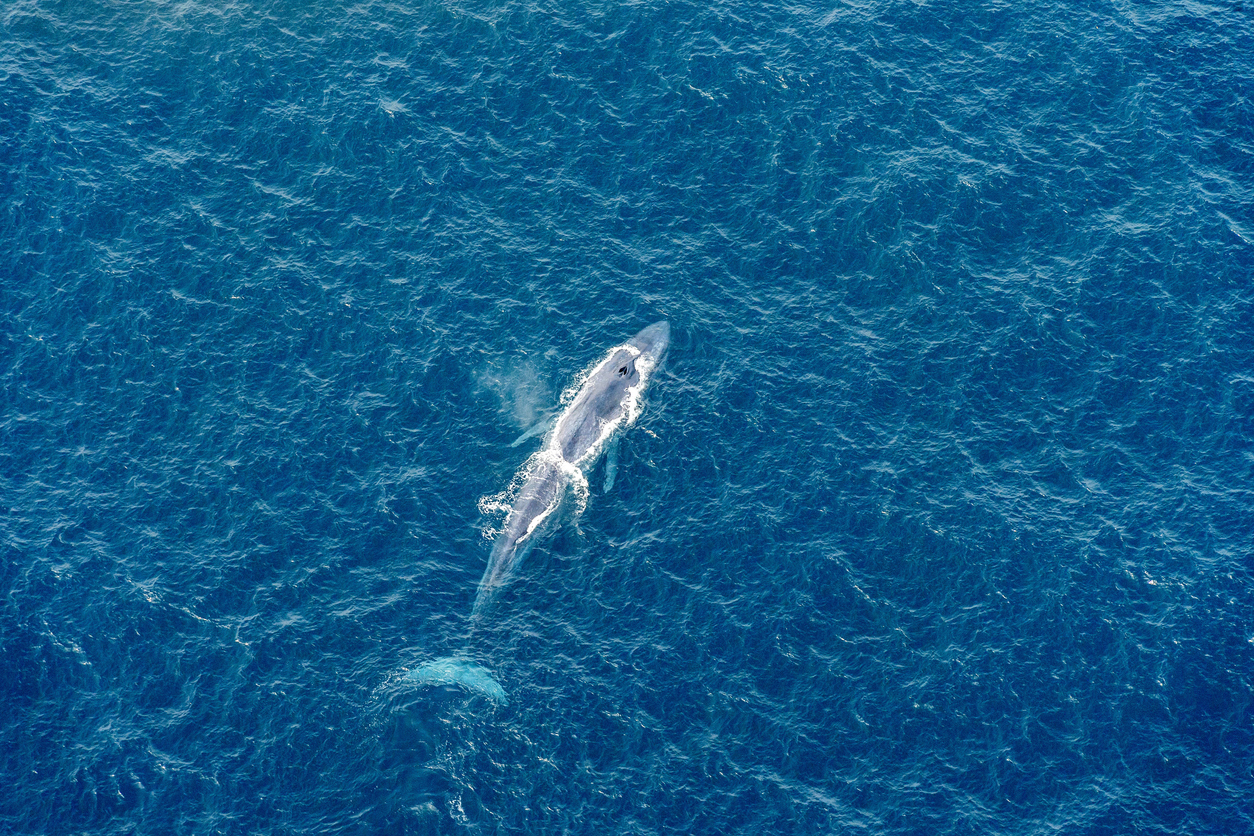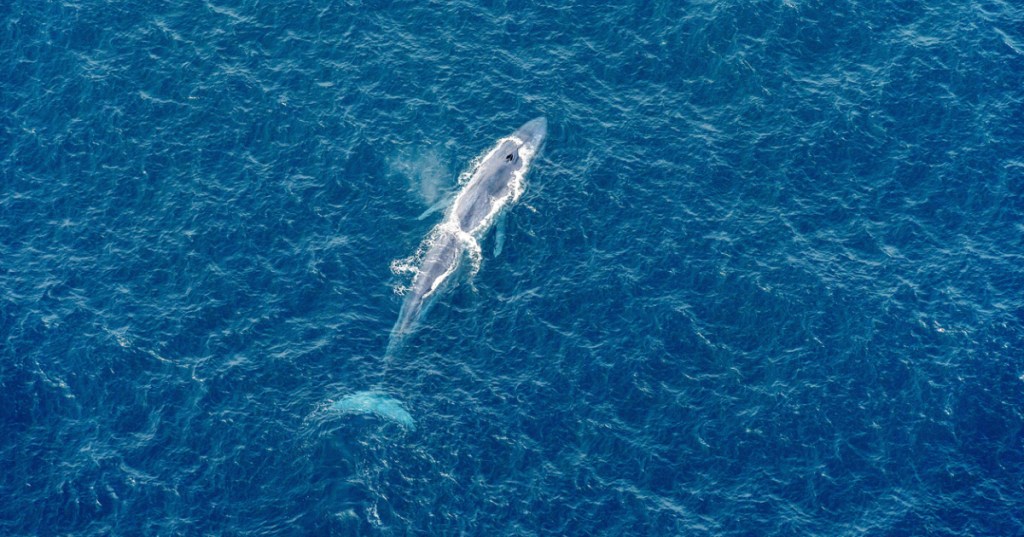We understand abstractly that blue whales are like, the biggest animal on earth, but do we really grasp how big that means they are?
I would guess probably not, but I mean, how can we?
Jeremy Goldbogen, co-director of the Hopkins Marine Station and Associate Professor of Biology at Stanford, says we should feel blessed to even be around to try to grasp such a thing.
“We live in a time of giants. Baleen whales have never been this big, ever.”
Baleen whales use large plates of bristly keratin to filter their food out of seawater rather rather than chewing with teeth, and the blue whale is among this variety.
They can be as big as 108 feet in length, and here are a few comparisons to bring that number to life.

Image Credit: iStock
They could touch two consecutive baseball bases at the same time.
If they stood upright, it would be two and half times larger than a brachiosaurus (but it can’t, because it would be crushed by its own mass out of the water).
If they stood by a giraffe they would reach six times as high, and it would take 15 Shaquille O’Neal’s to reach from tail to nose.
They weigh about 220 tons.
That said, they do not have the biggest brains on the planet – but, neither do humans, despite how proud we are of our own, says neuroscientist R. Douglas Fields.
“We humans pride ourselves on our big brains. The fact is, people do not have the largest brains on the planet, either in absolute size or in proportion to body size. Whales, not people, have the biggest brains of any animal on earth.”
If you’re curious, the sperm whale has the world’s largest brain, at about 8,000 cubic centimeters and around 20 pounds.
Scientist Bradley Voytek says the size isn’t the most interesting thing about the blue whale’s brain anyway.
“One of the most interesting things to me about the brains of cetaceans is how big some of their neurons need to be in order to move information from their bodies to their brains and back. …This means that if I were to flick a whale’s tail (as one might do), it could take anywhere from a third of a second (a long time in brain time!) to more than SIX SECONDS to reach the whales’ conscious’ perception.”
They also have enormous hearts. At around five feet by four feet, a small-ish adult could fit right inside.

Image Credit: iStock
You could probably cram a toddler into the 9-inches wide aorta, too, if you really wanted to try.
It weighs 440 pounds on its own, and is incredibly powerful, displacing 58 gallons of blood with each beat. Luckily for the whale (or maybe just its heart), it only beats about twice a minute – though it does beat much faster when they come to the surface.
Why are they so big, though?
In short, it’s a chicken and the egg thing – they have to eat a whole lot of calories to be able to fuel the systems that make their hearts beat, oxygen flow, and for them to be able to move and forage, and vice versa.
Eric M. Keen explained in the Scientific American.
“To compete for krill, they have evolved for long-distance efficiency at the cost of maneuverability. Bigness is key to the blue whale’s diet, but bigness also adds to the whale’s overall energy budget …the blue whale has become trapped within a tautological circle of specialization: it needs to be big enough in order to eat enough to be big.”
They eat around 50 million calories a day.
“That is about 70- to 80-thousand Big Macs. Probably decades of our eating is one day for them. It’s pretty remarkable.”
Whales, says Stanford researcher Matthew Savoca, are good for the planet.
“Whales are acting as mobile krill processing plants. These are animals the size of a Boeing 737, eating and pooping far from land in a system that is iron-limited in many places. These whales were seeding productivity out in the open Southern Ocean and there was very little to recycle this fertilizer once whales were gone.”

Image Credit: iStock
Smithsonian curator of fossil marine animals Nicholas Pyenson agrees that whales play a vital role in the natural carbon cycle.
“The contribution of whales to global productivity and carbon removal was once probably on par with the forest ecosystems of entire continents, in terms of scale. That system is still there. Helping whales recover could restore lost ecosystem functioning and provide a natural climate solution.”
Anyone in their right mind should be happy to hear that.
Unfortunately, I’m not sure that describes many people who are in charge these days.






